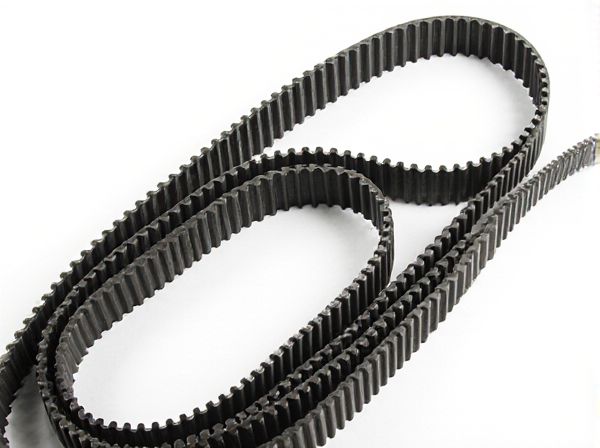
Photo illustration: Interference Engine vs Non-interference Engine
An interference engine has components that can collide if the timing belt or chain fails, potentially causing severe internal damage and costly repairs. A non-interference engine prevents such collisions by ensuring there is enough clearance between the valves and pistons, reducing the risk of engine damage during a timing failure. Understanding the differences can help you make an informed decision on maintenance priorities and repair costs for your vehicle.
Table of Comparison
| Feature | Interference Engine | Non-Interference Engine |
|---|---|---|
| Timing Belt Failure Risk | High risk of severe engine damage | Low risk, engine damage unlikely |
| Valve and Piston Contact | Occurs if timing belt breaks | No contact due to design clearance |
| Repair Cost | Expensive, often requires engine rebuild | Generally inexpensive, belt replacement only |
| Maintenance Frequency | Critical to replace on schedule | Important but less critical timing |
| Engine Design | Valves overlap piston path | Valves do not enter piston path |
Introduction to Engine Timing Mechanisms
Interference engines rely on precise engine timing mechanisms to prevent piston and valve collisions during operation, as the valves extend into the piston path. Non-interference engines have a timing configuration that ensures valves never contact pistons, reducing risk of catastrophic engine damage if the timing belt or chain fails. Accurate timing systems, including camshaft and crankshaft synchronization, are critical to maintaining optimal engine performance and avoiding mechanical failures in interference designs.
What is an Interference Engine?
An interference engine is a type of internal combustion engine in which the piston and valves occupy the same space in the cylinder but at different times, making timing precise to prevent collisions. If the timing belt or chain fails, valves can collide with pistons, causing significant engine damage. Non-interference engines are designed with extra clearance, allowing pistons and valves to avoid contact even if timing components fail.
What is a Non-interference Engine?
A non-interference engine is designed to prevent the pistons from striking the valves if the timing belt or chain fails, thereby avoiding major engine damage. In these engines, the valve clearance is sufficient to ensure that valves and pistons do not occupy the same space, even during timing misalignment. Non-interference engines typically have lower compression ratios and simpler timing mechanisms compared to interference engines.
Key Differences Between Interference and Non-interference Engines
Interference engines feature pistons that can contact valves if timing components fail, potentially causing severe engine damage, while non-interference engines prevent valve and piston collisions due to their design. Interference engines typically offer higher performance and efficiency, relying on precise timing belts or chains, whereas non-interference engines prioritize durability and lower maintenance risk. Key differences include the critical timing sensitivity in interference engines versus the safer operation of non-interference engines in timing failure scenarios.
Advantages of Interference Engines
Interference engines offer higher power output and improved fuel efficiency due to their ability to operate with tighter tolerances and more precise valve timing. These engines are typically lighter and more compact, which enhances overall vehicle performance and acceleration. The design also allows for better combustion control, resulting in cleaner emissions compared to non-interference engines.
Advantages of Non-interference Engines
Non-interference engines offer significant advantages in terms of reduced risk of catastrophic engine damage during mechanical failures since the piston and valve paths never intersect. Their design allows for less expensive repairs and easier maintenance by preventing valve-to-piston collisions, which is a common issue in interference engines. This reliability makes non-interference engines ideal for applications prioritizing durability and lower long-term servicing costs.
Common Problems and Risks of Each Engine Type
Interference engines are prone to valve and piston collisions if timing components fail, leading to severe engine damage and costly repairs. Non-interference engines reduce the risk of internal collision but often face lower compression and reduced performance, potentially causing diminished power output and efficiency. Common issues in both types include timing belt or chain wear, misalignment, and tensioner failures, which can result in engine misfires or breakdowns if not properly maintained.
Maintenance Tips for Both Engine Types
Interference engines require precise timing during maintenance to prevent valve and piston collisions, emphasizing regular timing belt or chain inspections and replacements. Non-interference engines allow for more leniency as valve-piston contact is avoided, easing timing component maintenance but still necessitating routine checks for wear and proper lubrication. Both engine types benefit from consistent oil changes, coolant level monitoring, and thorough inspection of engine components to ensure longevity and optimal performance.
Popular Vehicles Using Each Engine Design
Interference engines are commonly found in performance and modern vehicles such as Honda Civic, Ford Focus, and Toyota Camry, where precise timing ensures maximum efficiency and power output. Non-interference engines are typically used in older models and trucks like the Chevrolet Silverado and Jeep Cherokee, designed to avoid costly valve damage in case of timing belt or chain failure. Popularity of interference engines is rising in compact and mid-size cars, while non-interference engines still dominate in utility and some economy vehicles due to their durability and simpler maintenance.
How to Determine Which Engine Your Vehicle Has
To determine whether your vehicle has an interference or non-interference engine, consult the owner's manual or manufacturer's specifications, as they clearly state the engine type. You can also search for the engine model number online, which provides detailed technical information including whether it is interference or non-interference. Mechanics can perform a compression test or inspect timing belt alignment to identify potential engine types based on internal engine design and risk of valve-piston contact.
 caratoz.com
caratoz.com